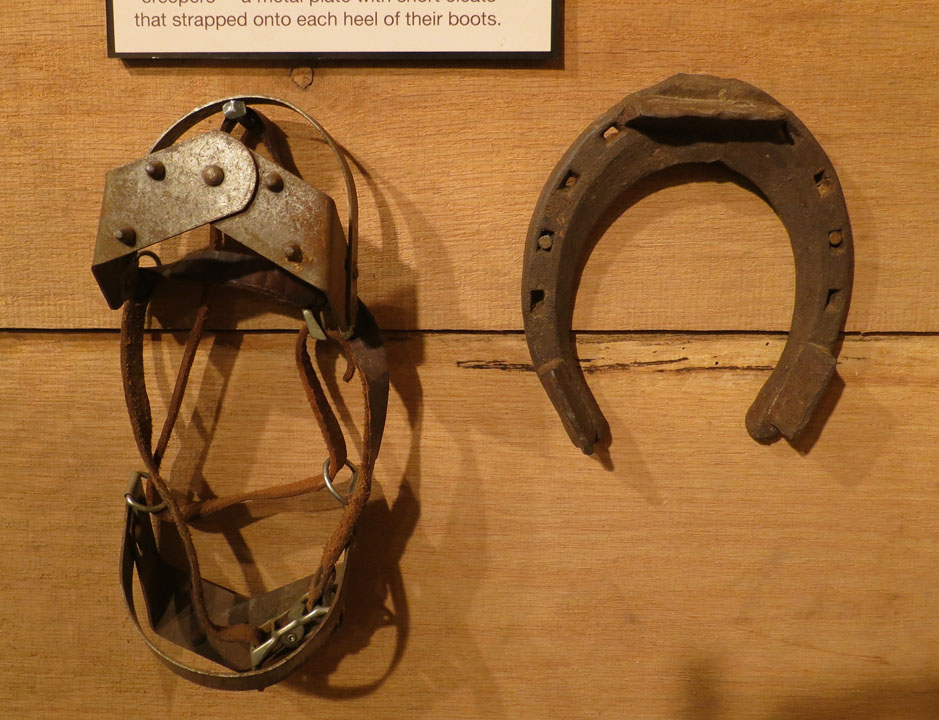Historic Ice Harvesting in Woods Hole
Tools for Harvesting the Ice
Ice Saws
A pond ice saw is very long because it needs to cut through ice that might be 18 inches thick. A good ice cutter would pull the saw almost out of the ice then lean far over to push the saw handles almost to the surface of the pond.
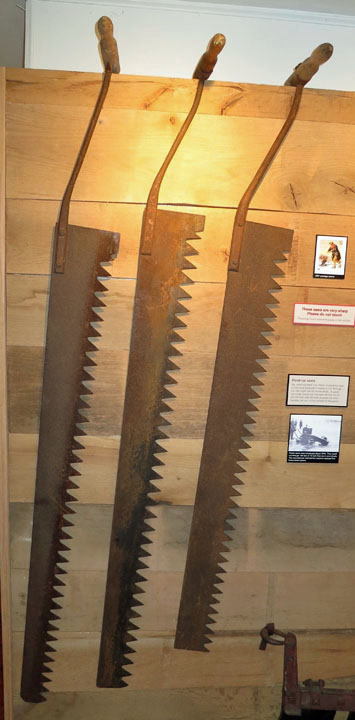
Ice saws
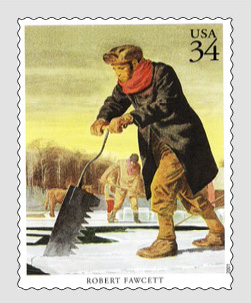
2001 postage stamp
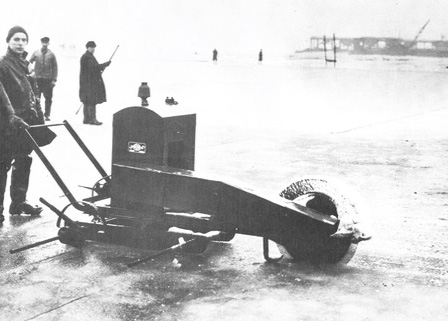
Power saws were introduced in about 1918. They could cut through 100 feet of 12 inch thick ice in one minute. The manufacturer claimed the machine could replace five horse-drawn plows.
Ice Plows
Large ice plows were pulled by horses to cut deep grooves into the surface of a frozen pond. Usually one man walked beside the horse to keep it going in a straight line. A second man followed behind the horse and held the handles of the plow.
Smaller ice plows were pushed by one man. This was typically used by a family for cutting ice, and not for large scale commercial operations.
The front cutting edge of each saw made a cut about 1/4” deep in the ice. Each cutting edge that followed cut the ice another 1/4”. If a saw had eight cutting edges it would cut a total of 2” each time it passed.
Plows were used to cut through about 2/3 of the thickness of the ice. If the ice was cut too deeply it might break and the horse and men would fall into the pond.
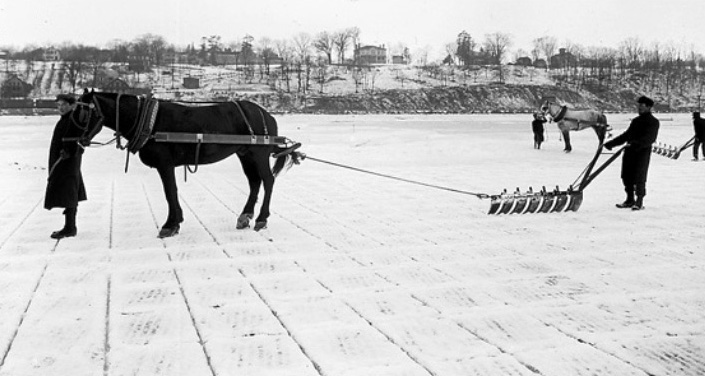
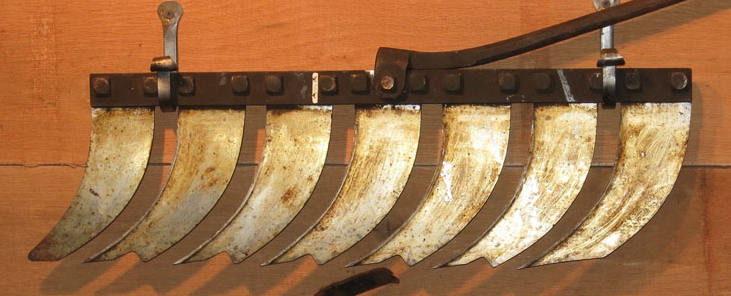
A small ice plow.
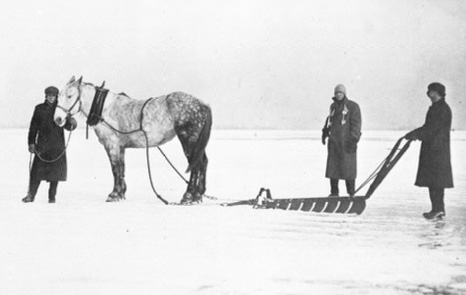
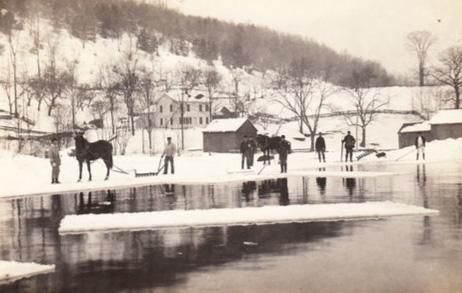
Chisels
The men with the saws did not need to cut out each individual ice block. It was often faster to cut out a line of several ice blocks, then have a man with a heavy chisel jam the tool into the deep groove between two ice blocks and pop them apart. The ice would usually break smoothly along the line of the groove.
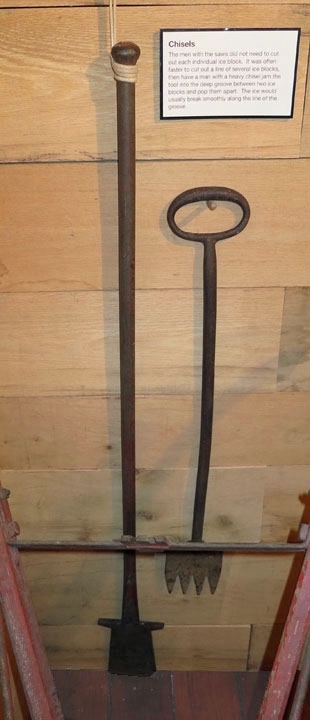
Pike Poles
This tool was used to guide floating ice blocks toward the ice house. The pointed end could be used to push the ice, while the hook could be used to pull a block closer. The pole was also used to move ice blocks into place inside the ice house. Some pike poles were 16 feet long to allow a man to reach an ice block that was floating too far away.
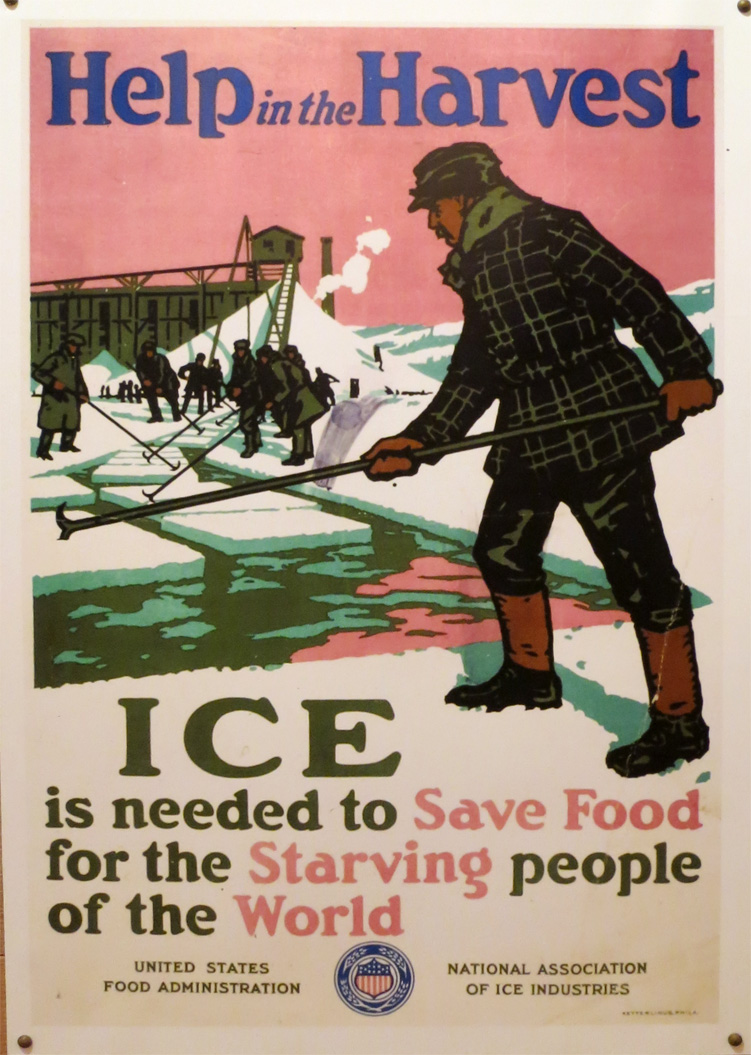
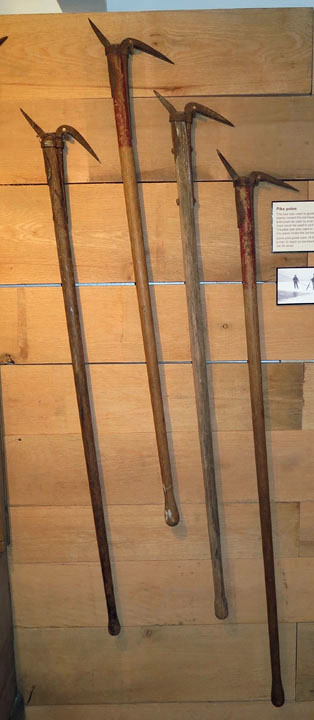
Ice Augers
The auger was used to drill holes into the surface of a frozen pond. A metal ruler with a hook at the bottom end was inserted into each auger hole to measure the thickness of the ice. The ice man would read the number on the ruler that was even with the surface. This allowed the ice cutters to know the thickness of the ice in different places and decide where to begin harvesting.
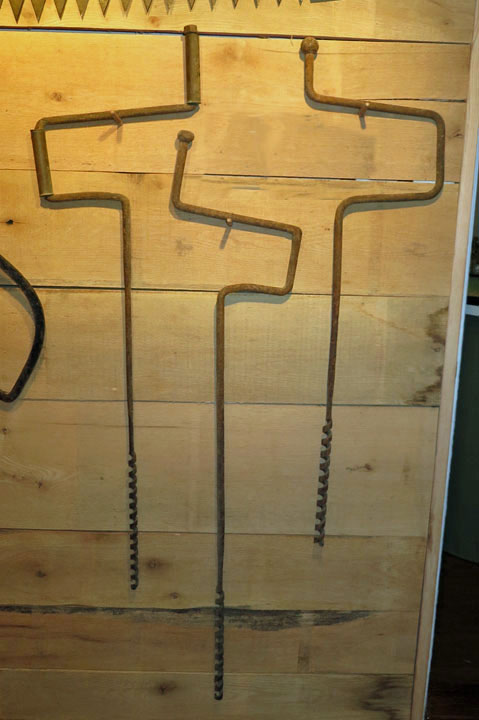
Sleds
Large blocks of ice that weighed several hundred pounds could be moved over ice or frozen ground with a sled like the one below.
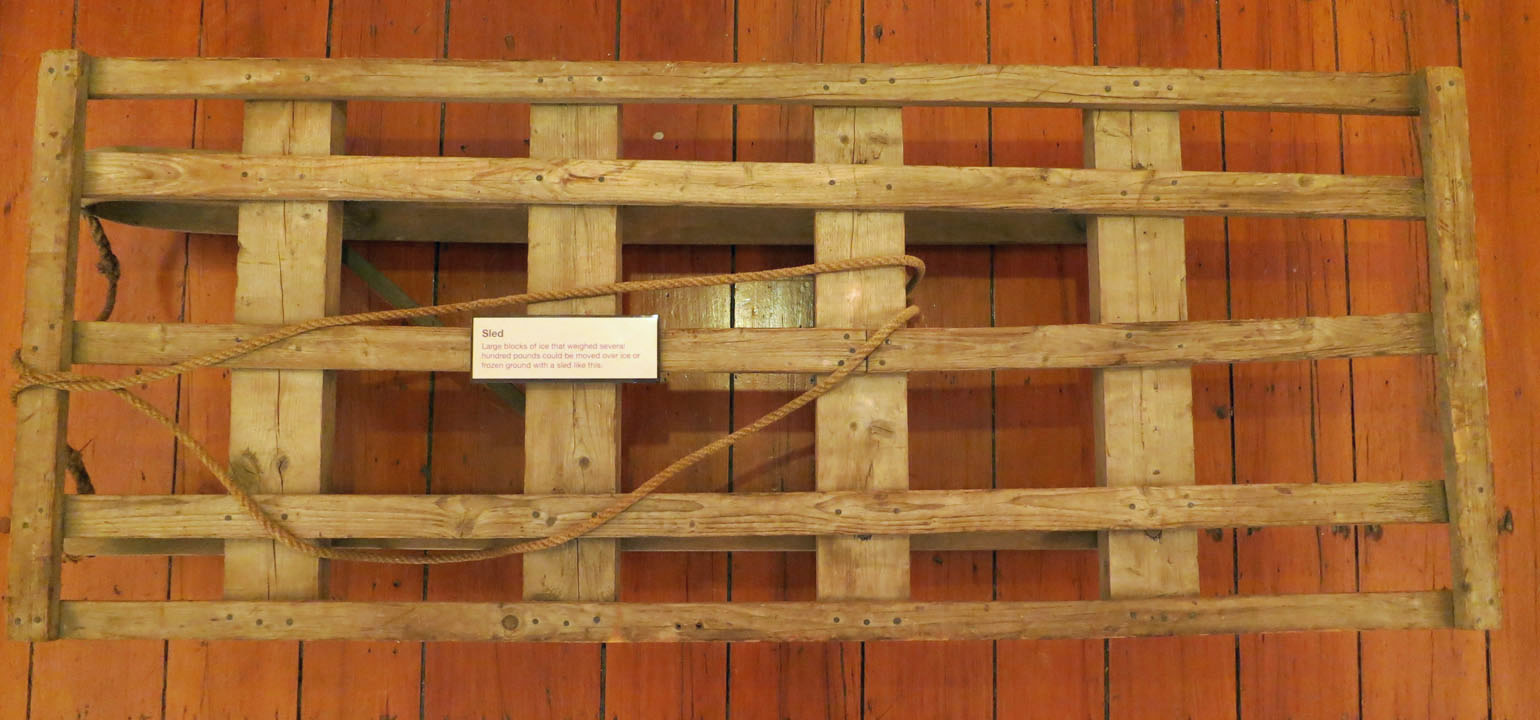
Cleats
Both men and horses needed to keep from slipping on the ice. The horses wore special horseshoes with long cleats. The men wore “creepers” - a metal plate with short cleats that strapped onto each heel of their boots.
